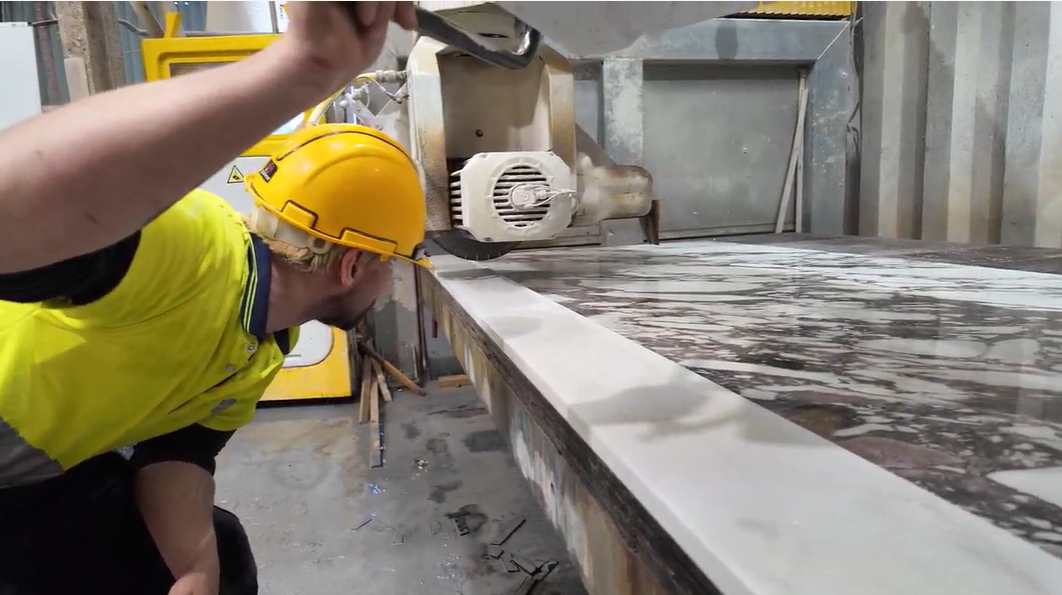
Large format porcelain sheets are becoming increasingly popular among homeowners, architects, and designers looking to achieve a clean, contemporary finish without the visual interruption of grout lines. These expansive panels create a seamless, sophisticated look across walls and floors, while being durable, low-maintenance, and versatile in design.
Porcelain sheets can replicate the appearance of natural stone or marble with remarkable accuracy, offering the elegance of premium materials with far less upkeep. Their smooth surfaces are easy to clean, resistant to stains and moisture, and ideal for both residential and commercial spaces where a modern, minimalist aesthetic is desired.
In the tile industry, “large format” refers to porcelain slabs that are substantially bigger than standard tiles. Common sizes include 3000 × 1000 mm and 2600 × 1200 mm, typically produced in a slim 6 mm thickness that makes them ideal for lightweight applications such as wall cladding, feature panels, and splashbacks. These generous dimensions allow entire walls or surfaces to be finished with minimal joints, creating a clean, uninterrupted appearance.
Different thickness options are available to suit various uses. Thinner sheets are well-suited to vertical installations, while thicker versions offer the strength and rigidity required for floors, steps, and exterior spaces. This combination of versatility and visual appeal makes large format porcelain an increasingly popular choice for both residential and commercial projects.
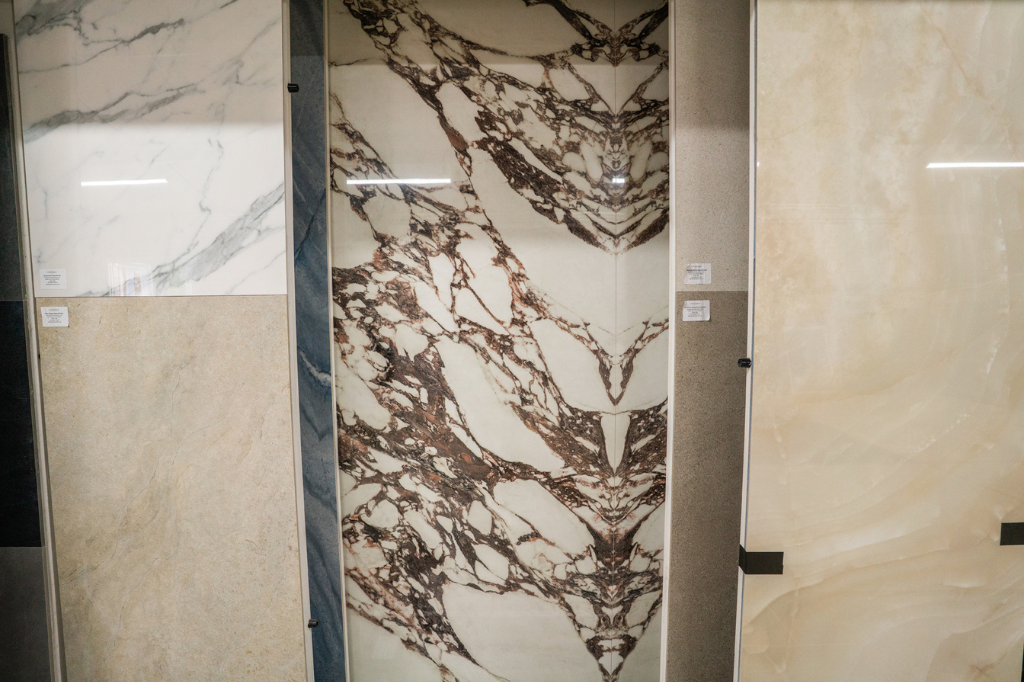
Large porcelain sheets are incredibly versatile. Inside the home, they’re perfect for bathrooms, wet rooms, splashbacks, kitchen walls, and fireplace surrounds. The continuous surface makes cleaning easier and brings a luxury feel to everyday spaces.
They’re also well suited to commercial interiors, such as hotel lobbies, restaurants, and retail displays, where durability and visual impact are both important. For those looking to extend the same look outdoors, porcelain sheets can be combined with thicker porcelain tiles for patios, terraces, and pool surrounds, creating a flowing connection between inside and outside spaces.
Porcelain large format sheets can be used to create luxury shower enclosures, or striking kitchen walls for example. By fitting these sheets, it is possible to dispense with the need to maintain metres and metres of grout between tiles! Use porcelain sheets for interior decoration to create virtually maintenance free living. The sheer size of these sheets creates a luxurious ambience wherever they are placed in a home.
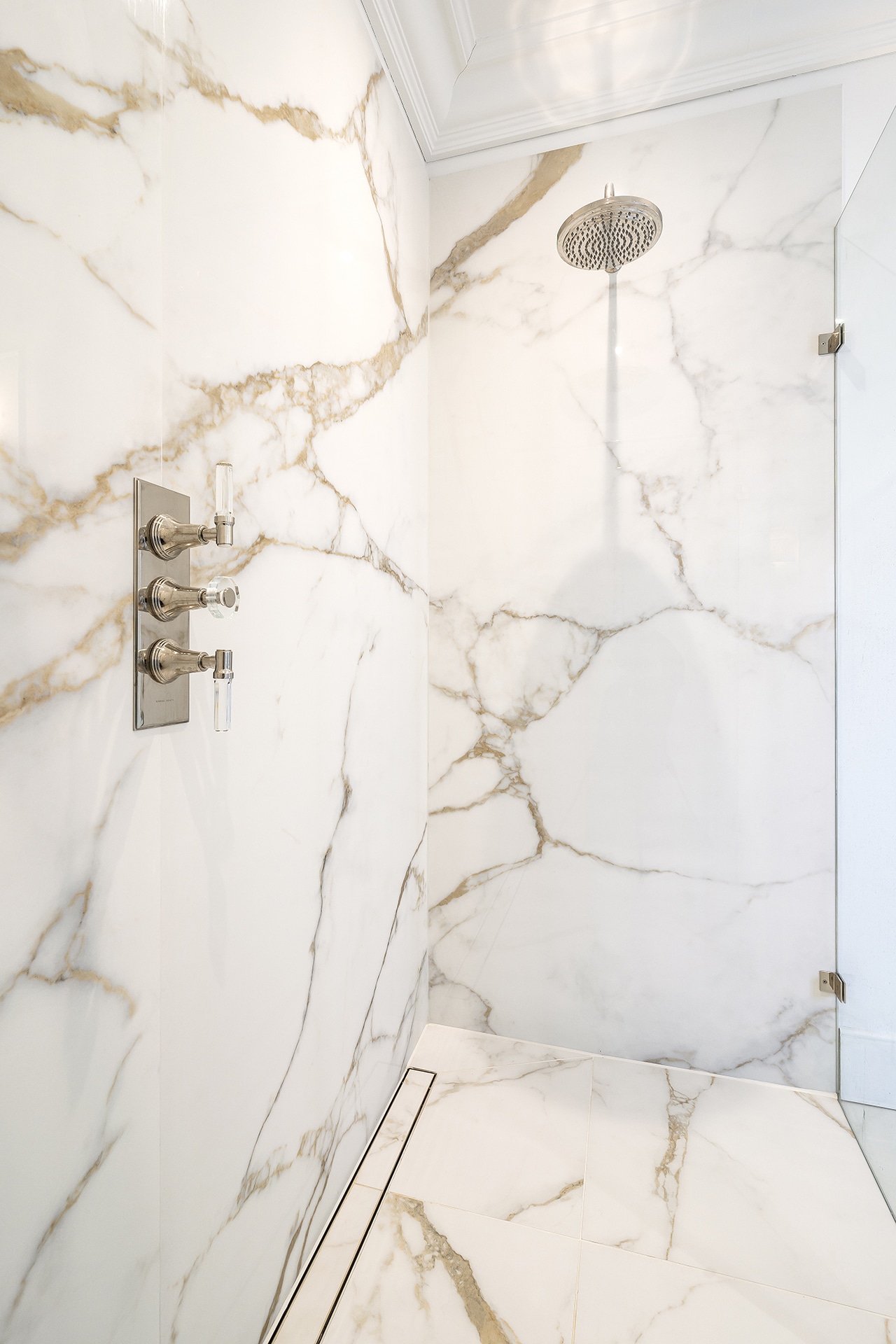
The appeal of large format porcelain lies in its seamless finish and minimal use of grout. With fewer joints, surfaces feel more open, refined, and easy to maintain. This clean, uninterrupted look is perfect for kitchens, bathrooms, and open-plan living areas where simplicity and continuity are key design priorities.
The generous scale of these slabs also encourages bold, creative applications. They can replicate the elegance of natural stone, the depth of polished marble, or the contemporary feel of industrial concrete — all without the natural inconsistencies found in quarried materials. For designers seeking a sleek, continuous aesthetic, large-format porcelain provides a flawless solution that enhances spatial flow.
From a practical perspective, porcelain is exceptionally durable and low maintenance. It requires no sealing, delivers consistent colour and texture across every sheet, and resists water, stains, and everyday wear. This makes it ideal for high-traffic homes, commercial interiors, and hospitality spaces where strength, hygiene, and easy upkeep are essential. Combining visual impact with long-term performance, large format porcelain is a smart, versatile choice for modern design.

Furthermore, it is possible to match interior floor tiles and exterior patio slabs. Use Thicker 20mm formats outside. Think about the threshold of a bi-fold door where the same material can bridge the interior and exterior floor surfaces- stunning!
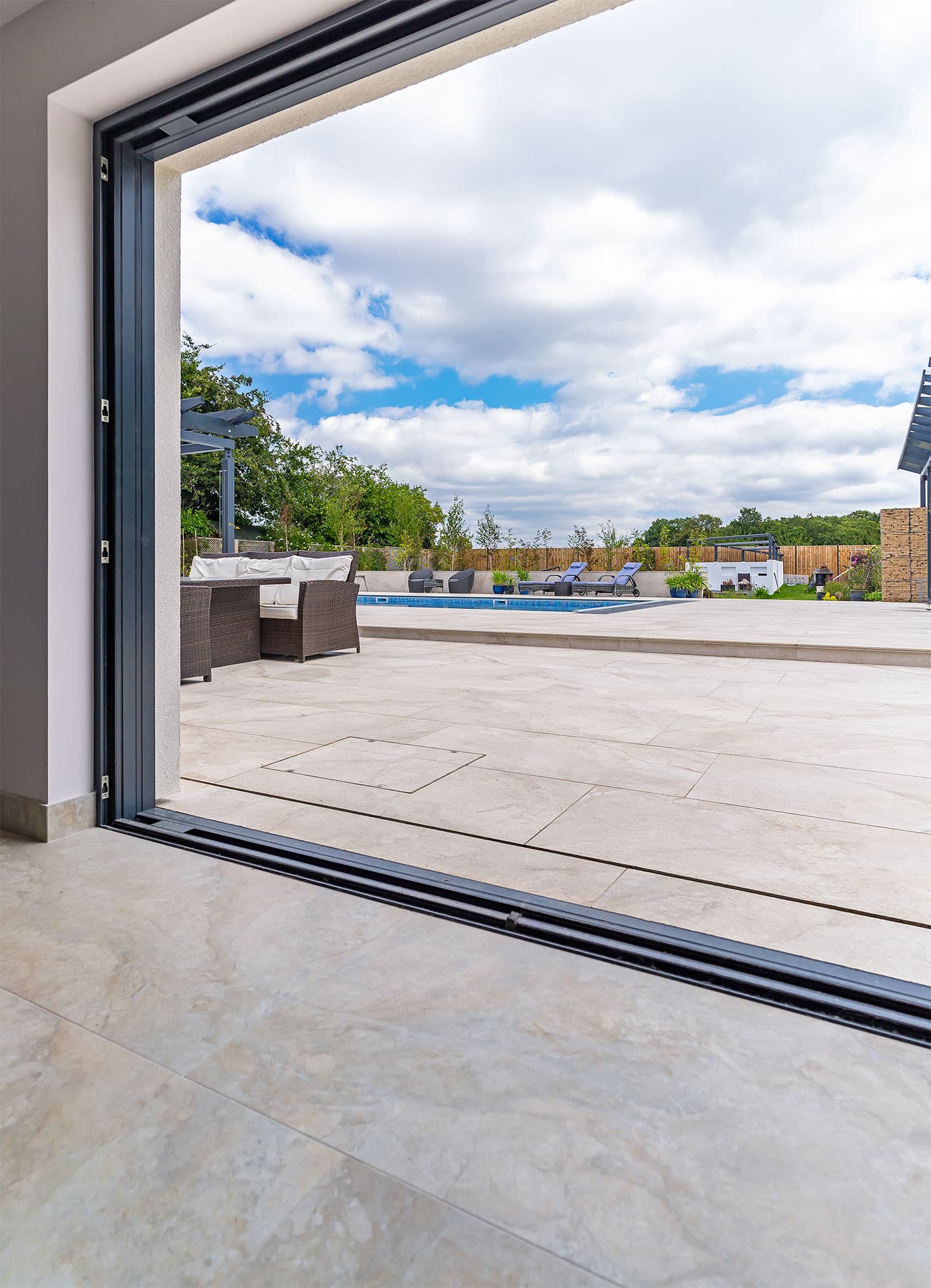
Large-format porcelain requires expert handling and precision cutting to achieve a perfect finish. In our workshop, we use advanced water-jet cutting and specialist porcelain equipment to deliver exceptional accuracy. This technology enables us to create socket openings, mitred edges, shower niches, splashback cut-outs, step nosings, and a wide range of made-to-measure features.
All fabrication is completed in our workshop, ensuring every slab arrives on site ready for installation and reducing the need for complex or risky on-site cutting. For projects that demand exact alignment — such as book-matched porcelain or precisely mitred corners — workshop preparation offers the most dependable and efficient approach.

Because the sheets are large and slim, careful planning is essential. Substrates must be flat and stable, adhesives chosen for full coverage, and movement joints included to avoid stress over time.
Specialist handling frames, suction lifters, and appropriate transport are strongly recommended to protect the edges and faces of the sheets. Installers should be confident working with large format products; where they aren’t, pre-cut pieces make the process easier and safer.
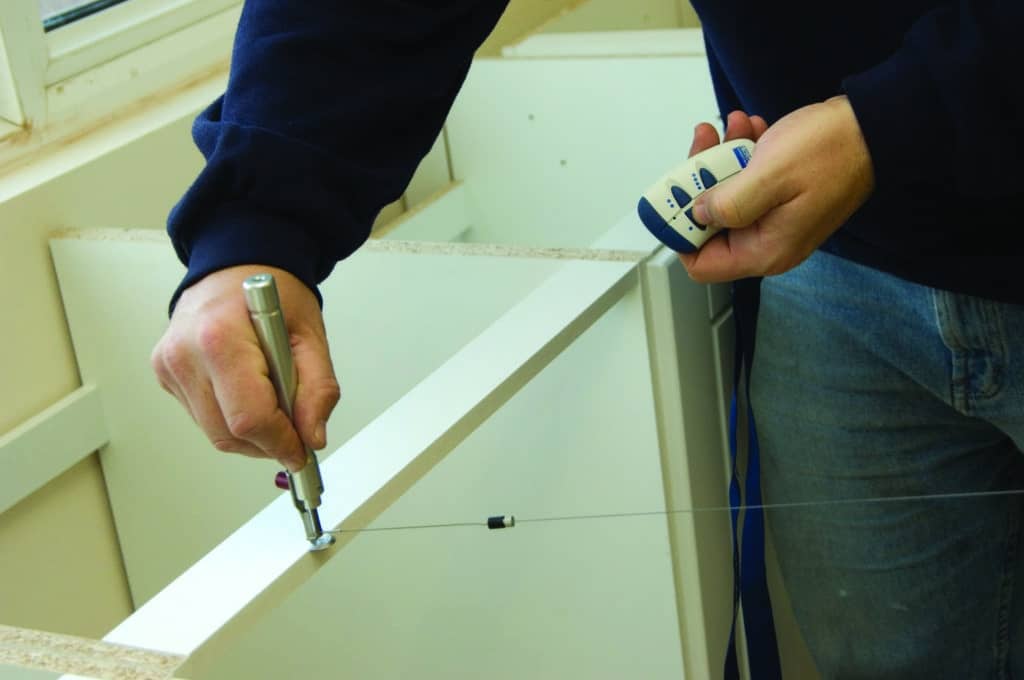
Installing large-format porcelain sheets usually costs more than regular tiles, because the size, weight and precision required introduce more challenges. Here’s what tends to push the price up, and some rough ideas of what a homeowner might expect to pay in the UK:
Porcelain is among the easiest surfaces to maintain. Being non-porous, it resists stains and can be cleaned effortlessly with a mild pH-neutral cleaner. This makes it a perfect choice for high-traffic kitchens and bathrooms where spills happen frequently.
For textured porcelain finishes, it’s best to avoid abrasive pads and instead use soft cloths or gentle brushes to protect the surface. With simple, routine cleaning, porcelain slabs stay looking fresh and require no sealing or specialist treatments.
Large-format porcelain slabs require a different approach from standard tiles. Their scale, weight, and rigidity mean they need specialist tools and skilled handling to be cut, lifted, and installed correctly. While some experienced tilers may take on the task, it’s always safest to work with professionals who regularly install large-format porcelain — ensuring accuracy, safety, and a flawless end result.
This level of expertise is essential for precision projects such as book-matched walls, seamless cladding, or installations with tight joint spacing, where even the slightest deviation can stand out. Professional installers understand how to manage the material’s weight, plan structural support, and handle each slab carefully to avoid damage and achieve a consistent finish.
At Stoneworld, we use advanced water-jet technology and dedicated porcelain machinery to prepare slabs before they reach site. Mitred edges, socket cut-outs, and apertures are all completed in our workshop, allowing for a smoother, faster, and more dependable installation process once on location.
Although “large format” typically refers to porcelain slabs measuring up to 3000 × 1200 mm, many manufacturers can produce bespoke dimensions to suit specific project requirements. The main considerations are handling and substrate support, which become increasingly important as panel size increases.
Extra-large or tall panels may require structural backing or support framing, particularly for vertical installations. Your installer or designer should always confirm that the wall or surface can safely bear the weight before installation begins.
At Stoneworld, our precision workshop cutting ensures every panel — including oversized or custom pieces — is prepared for accurate fitting, with any necessary reinforcements or adjustments planned in advance.
Large-format porcelain demands the right approach from start to finish — from sourcing and preparation to careful installation. At Stoneworld, we manage every stage of the process, helping you choose the most suitable format, handling all precision cutting, and arranging safe, reliable delivery. With our specialist equipment and experienced team, we make sure your project runs smoothly and achieves the seamless, high-quality finish you expect.